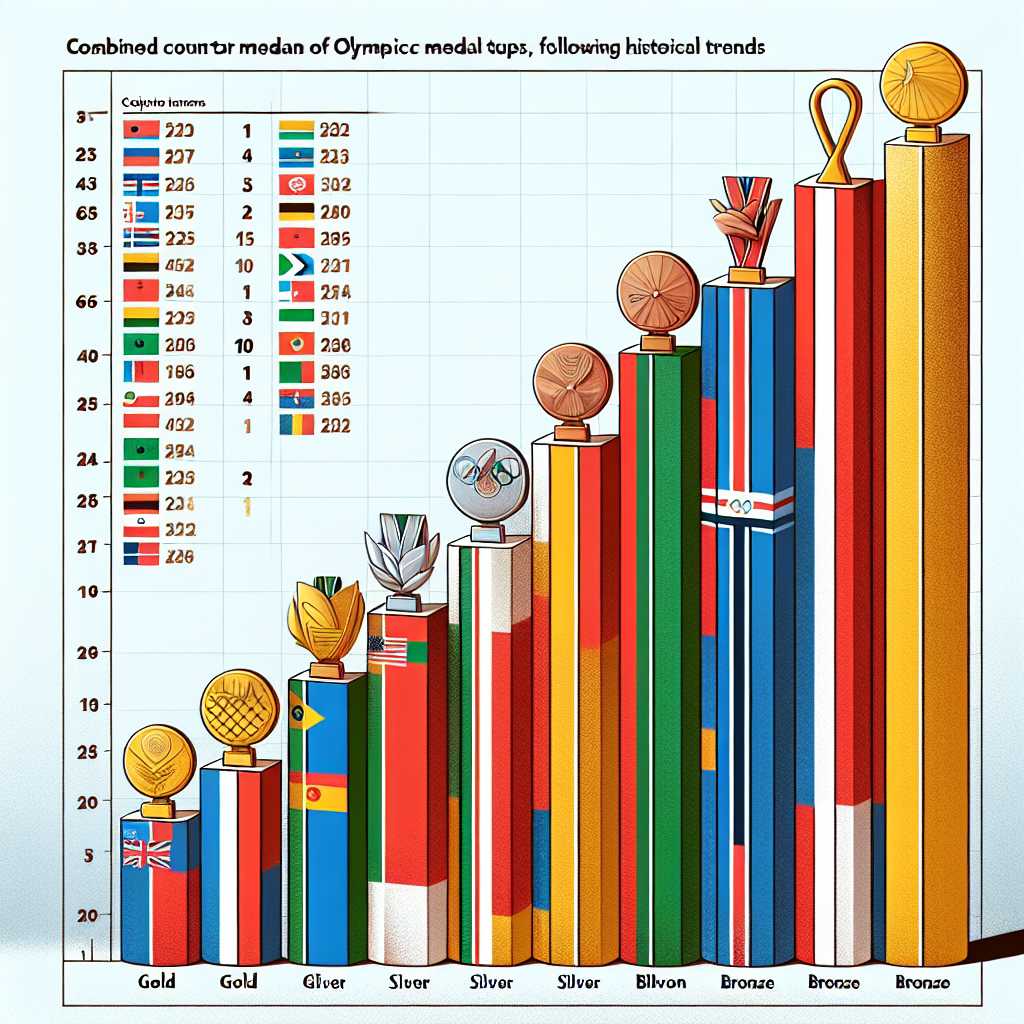The Significance and Trends of Olympic Medal Counts
The Olympic Games are a global spectacle that brings together nations from all around the world to celebrate athleticism, sportsmanship, and cultural exchange. Held every four years for both the Summer and Winter Games, the Olympics are a stage where athletes compete at the highest level for the ultimate honor: a coveted Olympic medal. These medals—gold, silver, and bronze—are symbols of personal and national achievement. The Olympic medal count not only reflects individual triumphs but also serves as an informal indicator of a nation’s sporting prowess, investment in athletics, and sometimes its geopolitical status.
Historical Overview of Olympic Medal Counts
Since the inception of the modern Olympics in 1896, the collection of medals by participating countries has emerged as an informal competitive front beyond individual sports. Initially dominated by Western nations due to their advanced sporting infrastructures and larger financial investments in athletics, the medal tally has diversified over time as more countries have amplified their focus on developing elite athletes.
In the early 20th century, nations like the United States, Sweden, and Great Britain were often found atop the medal standings, reflecting their positions in the global order at that time. As the century progressed, other countries, including those from Eastern Europe such as the Soviet Union and East Germany, began to emerge as formidable contenders. Their success was partly due to state-sponsored programs aimed at sports development as a means of global prestige and propaganda during the Cold War era.
The post-Cold War period saw fluctuating patterns, with perennial powerhouses like the United States continuing to feature strongly. New players like China began to make significant inroads into high-ranking positions in medal tables, starkly evident in the 2008 Beijing Summer Olympics.
The all-time Olympic medal count is an aggregate sum of medals won by each country since 1896 (for Summer Olympics) and 1924 (for Winter Olympics). However, this does not distinguish between gold, silver, and bronze medals.
The Process and Criteria Behind Medals Awarding
Medal counts are based strictly on medals earned through competitions. Gold medals are awarded for first place, silver for second place, and bronze for third place in each event. When tallying the number of medals each country wins during an Olympic Games, each type of medal is typically accounted for separately before considering the overall sum. The ranking of countries in Olympic medal tables usually prioritizes the number of gold medals obtained.
However, controversies occasionally arise over how medals should be distributed in events that end in a tie or how team medals should be counted. For example, a team victory equates to one medal added to a nation’s count rather than one medal per team member.
Analysis of Recent Trends in Olympic Medal Counts
Various factors influence recent trends in Olympic medal tallies including increased global participation; improved sporting facilities worldwide; changes to events contested; advances in training methods; diffusion of coaching expertise across borders; and strategic investments by certain countries aiming to excel on this stage.
Smaller countries with specific sporting traditions like Jamaica (sprinting) or Hungary (fencing) consistently being among larger nations speaks volumes about targeted investment and development in areas where they have comparative advantages. Likewise, some developing countries’ investment in sports programs have begun to manifest on the Olympic stage through sporadic successes.
Notes
Conclusions: Interpreting and Valuing Olympic Medal Counts
The assessment of Olympic success through medal counts remains a viable measure for evaluating relative athletic performance among nations. Despite this, caution should be practiced when using such statistics uncritically. They indeed reveal much about investment, infrastructure efficiency, and national priorities but can mask other important factors like athlete welfare, doping incidents, and the use of sport for political agendas.
Medal counts should thus be observed as one layer among many for interpreting national achievements during The Olympics.
Image Description:
This image depicts an illustrative chart with ascending bars representing different nations’ Olympic medal count totals. The bars are differentiated by colors corresponding to gold (top part), silver (middle part), and bronze (bottom part) segments. A note beside each bar indicates the country it represents. The tallest bar showcases the leading nation in combined medal totals up to 2023—ostensibly reflective of historical trends—while smaller bars illustrate subsequent ranks occupied by other competing nations.
